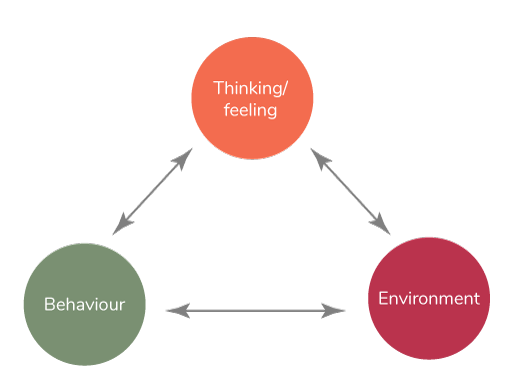In today’s hyper-connected world, where the boundaries between personal and professional life often blur, burnout has become a prevalent issue affecting many people. Burnout is not just about feeling tired or overworked; it’s a state of emotional, physical, and mental exhaustion caused by prolonged and excessive stress. In 2019 the World Health Organisation classified burnout as an occupational phenomenon.
As anyone who’s experienced burnout can attest, me included, it can significantly impact work performance, personal life, and overall wellbeing. Even though most of the research around burnout so far has focused on the factors of burnout in a work environment, recent studies (notably The Sydney Studies) have also expanded to include non-paid work such as home life and caring duties.
Recognising the Symptoms of Burnout
Burnout manifests in several ways and impacts both the mind and body. Measuring burnout is still a matter of debate among academics and the medical community, with a wide variety of tools being used including Maslach Burnout Inventory (MBI), Copenhagen Burnout Inventory (CBI) and Sydney Burnout Measure (SBM), just to name a few.
Even though as individuals we will all experience burnout differently, across the research there are some key symptoms in common, including:
- Physical Exhaustion: Constant fatigue and a lack of energy, even after adequate rest, are common indicators. However, burnout is not, simply exhaustion.
- Emotional Drain: Feelings of helplessness, frustration, and being overwhelmed can dominate your thinking.
- Cognitive Impairment: Difficulty concentrating, distractibility, forgetfulness, brain fog and impaired decision-making are often reported.
- Decreased Performance: A noticeable drop in productivity and efficiency at work is a common red flag.
- Detachment and Isolation: Withdrawing from colleagues, friends, and family can occur as individuals feel increasingly overwhelmed.
- Negative Attitudes: Developing a cynical or critical attitude towards work and feeling dissatisfied with achievements.
- Sleep disturbance: Both a lack of sleep or excessive sleep can be experienced during burnout.
Psychological Safety and Its Impact on Burnout
The interaction between our thoughts/feelings, behaviour and environment has an impact on many aspects of our lives, and also plays a part in burnout. When we are burnt out we often focus on our thoughts and feelings, but our environment plays a critical role, particularly at work.

In a workplace, burnout is closely linked to psychological safety – an environment where people feel comfortable expressing their thoughts, asking questions, and making mistakes without fear of repercussions. This idea, introduced by organisational behaviour scientist Amy Edmondson, is essential for reducing burnout and promoting a healthy work culture.
The presence of a safe and supportive environment can significantly reduce the risk of chronic stress and exhaustion. When you feel secure in your ability to share concerns and challenges without fear of retribution, you are more likely to address issues before they escalate. This proactive approach not only helps in managing stress but also prevents the sense of isolation that often accompanies burnout.
In one of my roles working at a large tech company, the standard approach had been a reluctance to share concerns about workload and unrealistic deadlines. There was a culture of “pushing through” burnout rather than addressing it (including working to midnight and on weekends). Without needing to change the organisation’s overall mindset, a new manager’s strategy of holding regular feedback sessions and maintaining an open-door policy for concerns had a noticeable impact on reducing burnout. Team members became more comfortable sharing their stressors and sought support when necessary. By intervening early to redistribute workloads and adjust project timelines, the team culture improved, stress was reduced, and trust was strengthened.
If you are wondering what you can do to promote psychological safety, here are a few ideas for your team/organisation:
- Open Communication: When people feel psychologically safe, they are more likely to communicate openly about their stressors and seek support, reducing the risk of burnout.
- Error Tolerance: An environment that tolerates mistakes as part of the learning process can reduce anxiety and stress, as people don’t fear repercussions for errors.
- Innovation and Engagement: Psychological safety encourages innovation and engagement, as team members feel valued and understood, leading to increased job satisfaction and reduced burnout.
- Supportive Relationships: It fosters strong, supportive relationships among colleagues, which can act as a buffer against stress.
The role of perfectionism and personal belief systems on burnout
While external stressors from work or home can trigger burnout, a research team from UNSW identified personality traits such as perfectionism can play a significant role. Perfectionists are often high achievers who set exceedingly high standards for themselves, aiming for flawlessness in everything they do. While this trait can lead to excellent performance and reliability, it also makes individuals prone to burnout.
Perfectionism involves a constant drive for unattainable standards, which can result in a cycle of overwork, dissatisfaction, and stress. You can find perfectionists:
- Spending excessive time on tasks to ensure they are perfect
- Procrastinating out of fear of making mistakes
- Being overly critical of their own performance and accomplishments
- Experiencing heightened stress and anxiety when things don’t go as planned
Even if you are prone to perfectionist thoughts and behaviours, it is possible to reduce your vulnerability to burnout. It’s essential to recognise that managing perfectionism is an ongoing process that requires patience and commitment.
Other research has also found that personal belief systems can increase an individuals risk of burnout. People that hold engrained beliefs such as “hard work is noble work” or “needing to prove I’m good enough”, can be emotionally wired to work harder and for longer without healthy boundaries. Our belief systems are emotional drivers, and will often override the ability to recognise the symptoms and signs of burnout.
Preventing Burnout: Proactive Measures
Prevention is always better than cure. By implementing proactive measures, you can create a personal ecosystem that promotes wellbeing and reduces the risk of burnout. The key point is to recognise the early signs of stress and take steps to address them before they escalate.
Here are some proactive steps to prevent burnout before it starts:
- Develop Stress-Management Techniques: Regularly practice stress-management techniques such as conscious breathing, progressive muscle relaxation, mindfulness, or mediation. It doesn’t always need to be sitting in a dark room chanting “om”, for me motorcycle riding has been a “moving meditation”.
- Take Care of Your Health: It might sound obvious but regular exercise, a healthy diet, and sufficient sleep are foundational to maintaining resilience against stress.
- Maintain Human Connection: Building and maintaining a supportive network of colleagues, friends, and family can provide a buffer against stress. This doesn’t need to be 100 people, a small group of 2-3 that you can connect with can be enough.
- Implement a Tech/Phone Strategy: People with daily rituals to disconnect from phones and other screens have shown to reduce their risk of developing burnout.
- Regularly Assess Workload: Periodically evaluate your workload and seek adjustments if necessary. Communicate with your supervisor/manager/colleagues about realistic expectations and deadlines.
- Adopt a Growth Mindset: Embrace challenges as opportunities for growth rather than threats. A positive attitude towards change and adversity can reduce stress levels.
- Minimise multitasking: We overestimate our ability to multitask, and it comes at a real cost to our mental health, capacity and productivity.
- Promote Psychological Safety: Advocate for a workplace culture where people feel safe to speak up, share ideas, and report issues without fear of retribution.
- Foster a Positive Work Environment: Contribute to a supportive and positive work culture. Encouraging teamwork, mutual respect, and recognition can enhance job satisfaction.
Managing Burnout: Strategies for Recovery
Like so many, there have been times that I hit the burnout wall. They key when you experience burnout is addressing it promptly and effectively. Recovery from burnout requires a multifaceted approach that includes both individual self-care and support from your team/organisation. By acknowledging the problem and implementing a range of strategies, it is possible to restore balance and wellbeing.
But remember, burnout developed over time and takes time to resolve – there is no quick fix. Managing burnout should involve not only alleviating any immediate symptoms, but also identifying and addressing the underlying causes to prevent recurrence.
Here are some strategies to help manage and recover from burnout:
- Acknowledge and Accept: The first step is recognising and accepting that you are experiencing burnout. If you get stuck in denial and stonewalling, it can delay recovery and exacerbate the condition.
- Seek Support: Reach out to friends, family, colleagues or a health professional. Talking about your feelings and concerns can provide relief and perspective.
- Set Boundaries: Learn to say no and set limits to avoid overcommitting. Establishing clear boundaries between work and personal life is vital.
- Take Breaks: Regular breaks during work can prevent the build-up of stress. Consider short, frequent breaks to recharge your energy.
- Reevaluate Goals and Priorities: Reflect on your personal and professional goals. Realigning them to what truly matters, to you not to others, can reduce stress and increase satisfaction.
- Change Work Environment: If possible, consider changes in your work environment or routine to reduce stressors. This might include flexible working hours, reducing workload, or seeking a different role within the organisation or finding a role at a new organisation.
- Prioritise Self-Care: Engage in activities that rejuvenate you. This includes adequate sleep, a balanced diet, regular exercise, and mindfulness practices such as meditation or yoga.
Burnout is a serious condition that can profoundly impact work performance and overall quality of life. By recognising the symptoms of burnout, and employing effective management and preventive strategies, individuals can better navigate the challenges of modern work life. Moreover, fostering psychological safety within the workplace is crucial for preventing burnout and ensuring a supportive and healthy work environment. Taking proactive steps to balance stress and wellbeing is essential not only for personal health but also for maintaining productivity and job satisfaction. Prioritising mental and physical health is the cornerstone of a fulfilling and sustainable career.
Remember, if you have symptoms that are negatively affecting your mental or physical health, please talk things through with your trusted medical or mental health professional.

